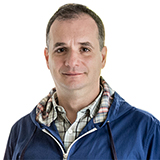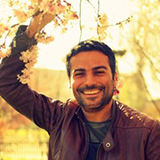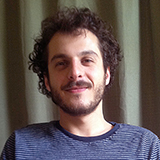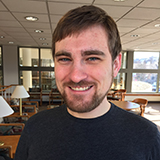Biosemiotics: interplay between self-organization and selection
we regard computation as a general principle for generating open-ended complexity. Turing's universal computation, and Von Neumann's principle of open-ended complexity growth, formalized a principle of computation which happens to also be the most fundamental principle of life: neo-Darwinian evolution. From this computational understanding of evolutionary systems, we am interested in several questions: how do cells and collectives of cells compute? Is language an evolutionary system operating under the same principle? Can artificial systems implement the same principle?
Selected Self-organization in Genotype-Phenotype Maps
We are interested in the linguistic/symbolic aspects of the living organization (the gene as a carrier of information, and DNA as memory) which play a large role in the seemingly open-ended evolution defined by natural selection. This symbolic vision of biology (bio-semiotics), at first glance, seems to be at odds with notions of self-organization so dear to complex systems scientists and a more developmental approach to biology. Therefore, we have been studying the interplay between self-organization and natural selection (in embodied agents), introducing the concept of selected self-organization [Rocha ,1996a; Rocha, 1998a].
We are particularly interested in the problem of how information, symbols, representations and the like can arise from a purely dynamical system of many components. In addition to our work on collective computation and origin of representations, we have worked on simulations of evolving agents with different kinds of reproduction strategies (self-inspection and via a symbolic genotype-phenotype mapping). For these simulations we developed a genetic algorithm with an indirect encoding implemented with Fuzzy Development Programs, which model self-organizing development processes. More information on these simulations is available in the Fuzzy Development Programs’ Resource page, which contains publications and software for understanding and using these. You can also check a paper where these simulations are detailed. The figure depicts a run of our agent-based model where agents which reproduce via a genotype-phenotype mapping completely overtake a population, in a few generations, also containing agents which reproduce by self-inspection without such mappings.
Project Members (Current and Former)

Luis Rocha

Al Abi-Haidar

Artemy Kolchinsky

Ian B Wood
Selected Project Publications
- A. Challa, D. Hao, J.C. Rozum, and L.M. Rocha.[2024]. "The Effect of Noise on the Density Classification Task for Various Cellular Automata Rules". ALIFE 2024: Proceedings of the 2024 Artificial Life Conference. MIT Press. pp. 83. DOI: 10.1162/isal_a_00823.
- M.R. Francisco, I. Wood, S. Sabanovic and L.M. Rocha [2014]. “Designing a minimalist socially aware robotic agent for the home”. Artificial Life 14: Proceedings of the Fourteenth International Conference on the Synthesis and Simulation of Living Systems: 876-883, MIT Press.
- L.M. Rocha [2007].”Reality is Stranger than Fiction: What can Artificial Life do about Advances in Biology?“. Invited presentation for the “Biocomplexity” discussion section at the 9th European Conference on Artificial Life, September 12, 2007 in Lisbon, Portugal.
- Rocha, Luis M. and W. Hordijk [2005]. “Material Representations: From the Genetic Code to the Evolution of Cellular Automata”. Artificial Life. 11 (1-2), pp. 189 – 214
- Rocha, Luis M. [2001]."Evolution with Material Symbol Systems." Biosystems. Vol. 60, pp. 95-121.
- Rocha, Luis M. (Ed.)[2001]. The Physics and Evolution of Symbols and Codes. BioSystems Vol. 60, No. 1-3. Editorial: Biosystems Vol. 60, pp. 1-4.
- Rocha, Luis M. [2000]. “Syntactic autonomy, cellular automata, and RNA editing: or why self-organization needs symbols to evolve and how it might evolve them”. In: Closure: Emergent Organizations and Their Dynamics. Chandler J.L.R. and G, Van de Vijver (Eds.) Annals of the New York Academy of Sciences. Vol. 901, pp 207-223.
- Rocha, Luis M. [1998]." Selected Self-Organization and the Semiotics of Evolutionary Systems." In: Evolutionary Systems: The Biological and Epistemological Perspectives on Selection and Self- Organization. S. Salthe, G. Van de Vijver, and M. Delpos (eds.). Kluwer Academic Publishers, pp. 341-358.
- Rocha, Luis M. and Cliff Joslyn [1998]." “Simulations of Evolving Embodied Semiosis: Emergent Semantics in Artificial Environments” Simulation Series; Vol. 30, (2), pp. 233-238.
- Rocha, Luis M. [1998]." Syntactic Autonomy." In: Proceedings of the Joint Conference on the Science and Technology of Intelligent Systems (ISIC/CIRA/ISAS 98). National Institute of Standards and Technology, Gaithersburg, MD.. IEEE Press, pp. 706-711.
- Rocha, Luis M. [1997]." Evidence Sets and Contextual Genetic Algorithms: Exploring Uncertainty, Context, and Embodiment in Cognitive and Biological Systems. PhD Dissertation. State University of New York at Binghamton.
- Rocha, Luis M. [1996]." Eigenbehavior and symbols." In: Systems Research Vol. 13, No 3, pp. 371-384
- Rocha, Luis M. [1995]." Contextual Genetic Algorithms: Evolving Developmental Rules ." In: Advances in Artificial Life . F. Moran, A.Moreno, J.J. Merelo, and P. Chacon (Eds.). Series: Lecture Notes in Artificial Intelligence, Springer-Verlag. pp. 368-382.
